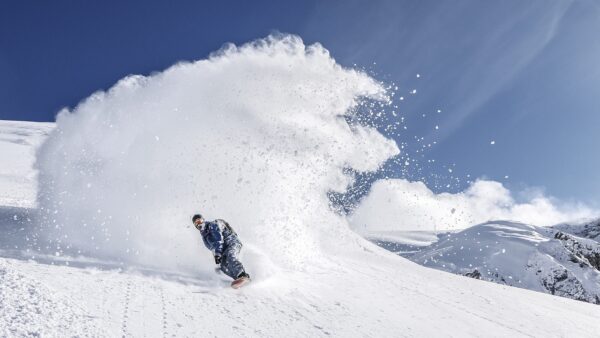SKIING IN THE SNOW
Tags: outdoor, ski, snow, winter, wintersport
Winter has arrived, it’s time to ski. For people who love the snow this is the most wonderful time of the year when they wake up early, put on their hat, gloves and ski boots and head for the slopes.
Skiing has always been the definitive winter sport, the sport of the Christmas holidays, an activity for adults and children, experts and beginners alike, people who love devil-may-care descents or simply being out in nature.
There are three main kinds of skiing: cross-country, downhill and ski mountaineering. They are all very different but share one common denominator: a love for the mountains and, of course, of skis!
Cross-country skiing , or Nordic skiing, originated in Scandinavia when skis were an actual means of transport. Today it’s an activity that combines a love of nature and a love of sport. In effect, cross-country skiing enables you to go on long treks in the snow, mainly over flat terrain or gentle ascents and descents. The technical action is fairly simple: the heels are not anchored to the skis, and this enables the skier to generate the impetus needed to move forward. Nonetheless, cross-country skiing is a fully-fledged sport in every sense. Anyone can do it and it mainly engages the legs and arms – a real cure-all for the whole body.
The most famous (and perhaps the most practiced) variant is undoubtedly alpine skiing. Skiers reach summit exclusively using ski lifts and descend the mountain on snow-covered pistes that are generally categorised by level of difficulty (easy green/blue pistes, more difficult red pistes, and the most difficult black pistes).
Alpine skiing requires good physical mastery and a knowledge of the fundamental techniques. Contrary to what people often think, this is not an activity to be taken lightly but requires a great deal of care. Although anyone can start skiing at any age it’s important to never underestimate the difficulty of the descent and, for beginners in particular, it’s best to spend a few hours at a ski school with tuition from a professional teacher.
Ski mountaineering is the term for skiing over fresh snow: so-called “off-piste” skiing. A crucial difference is how skiers get to the top of the mountain. Unlike in alpine skiing they don’t ascend using ski lifts but on foot, to then descend down undisturbed trails.
Compared to alpine skiing, ski mountaineering is a much more complex sport that presents a number of dangers. People can only think of trying it if they have solid experience and an excellent mastery of skiing and skiing techniques. When descending the slopes there is a very high likelihood of encountering broken terrain, steep stretches and trees… in short, ski mountaineering is an extreme sport that’s certainly unsuitable for beginners but excellent if you’re looking for moments of pure adrenaline.
Sources:
https://qui-montagna.com/
www.skiinfo.it

For more and more people, winter is synonymous with mountain sports. Skiing, snowboarding, ski mountaineering and cross-country skiing are just some of the most popular disciplines. As in all sports, […]